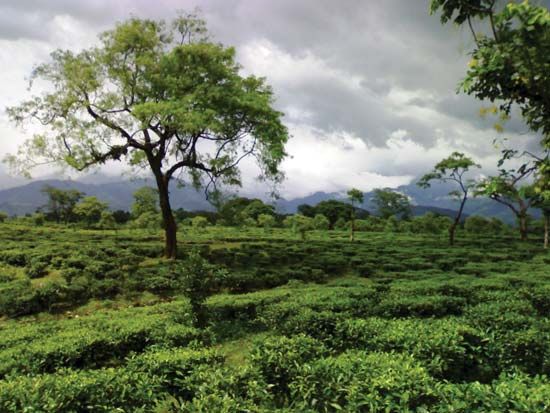West Bengal Duars
Our editors will review what you’ve submitted and determine whether to revise the article.
West Bengal Duars, physiographic region in extreme northeastern West Bengal state, northeastern India. It is bounded by Sikkim state and Bhutan to the north, Assam state to the east, the continuation of West Bengal state to the south, and Nepal to the west.
The West Bengal Duars were ceded to the British by Bhutan in 1863. They constitute a lowland forest belt along the junction between the foothills of the Himalayas to the north and the North Bengal Plain region of the Lower Ganges (Ganga) Plain to the south. The name Duars (“Doors”) is derived from the several passes that lead from the region northward into the Lesser Himalayas. Along the northern portion of the West Bengal Duars are large banks of boulders, through which flow numerous streams cutting across the slope from the low foothills in the north to the plains in the south. These streams and the Tista River on the western side of the Duars occasionally bring devastating floods. The area is covered with dense forests of conifers (including silver firs) and oaks, magnolias, rhododendrons, beeches, birches, and sal (Shorea robusta).
Forests have been cleared for tea plantations in the Darjiling (Darjeeling) foothills in the northeast. Rice, jute, corn (maize), potatoes, vegetables, and fruits are the other major crops grown. Industries in the area produce foodstuffs, beverages, dairy products, leather footwear, and transport equipment; rice, oilseeds, and wheat are milled. Siliguri, Darjiling, and Jalpaiguri are the region’s most important cities and are linked by roads and railways. Siliguri has an airfield nearby at Baghdogra.










